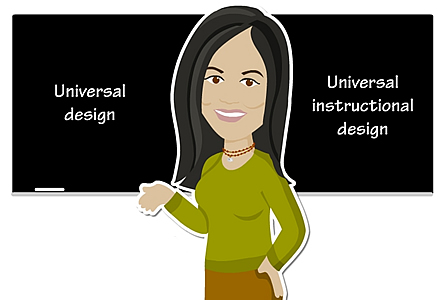

 Accessibility Terminology
Accessibility TerminologyHere are another two terms you may have heard of. Do you know the difference between them?
Universal design
Universal design helps to ensure a high degree of building accessibility. It is the design of products and environments to be usable by all people, to the greatest extent possible, without the need for adaptation or specialized design.
Universal instructional design
Universal instructional design helps to ensure a high degree of accessibility to subject matter and instruction. In terms of learning, universal design means the design of instructional materials and activities that make the learning goals achievable by individuals with a wide variety of learning styles or needs. For example, people attend to, organize, engage and remember information differently. Some people attend to what they see while other people take notes to help them process the material.
The use of universal instructional design principles helps to make instruction and teaching accessible because it incorporates into the design and delivery of a course a deliberate and pre-emptive response to the changing and varying learning needs of students, including those with disabilities.
Did You Know?
The Center for Universal Design in the U.S. originally developed seven principles of universal design in 1997 to guide a wide range of design disciplines including products and communications.
You can find out more about the seven universal design principles under Resources.
| Resources | Map | Back | Next |